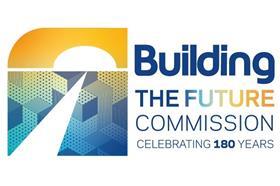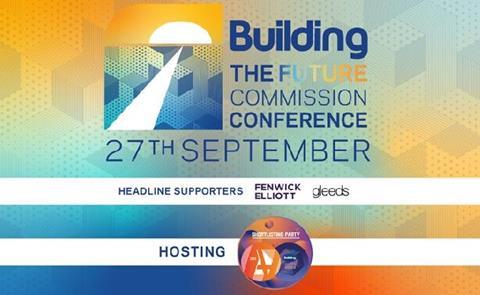Procurement reform and clients who are prepared to use alternative price evaluation models are surely the way to improve the whole process and get the right bidder at the right price for a project, argues Rebecca Rees

Back in 2018, Dame Judith Hackitt pointed out that procurement sets the tone of an entire construction project. If a client procures with a focus on lowest price, she argued, the ensuing relationship is likely to result in mistrust, disputes and poor quality and safety outcomes.
Ask any public sector client and they will swear blind that they don’t procure on a lowest-cost basis. Their tender documents include social value objectives, net zero aspirations, end-user engagement initiatives and digitisation requirements. They will also point to evaluation weightings that prioritise quality over price (“we never go lower than 60% quality/40% price”).
Unfortunately, they are missing the point and are still likely to be creating a “race to the bottom” on price. This is because it is how price is evaluated – not how much weight it is given – that shapes bidders’ behaviour and ultimately sets the price. If the lowest price tendered will earn the highest marks available, then the only way the tender price is going is down.
But why is this an issue? Surely clients should be getting the best possible quality at the leanest possible price? It is, after all, taxpayers or leaseholders money they are spending.

The short answer is: the price is usually a complete fiction – a tender price will bear little resemblance to what the client ultimately pays. Where the tender exercise allows no post-award negotiation of price, competition will reduce as potential bidders decide not to bid. So the client ends up with a fictitious price from a reduced field of competitors: how is that value for money?
Who needs to solve this problem? It must be the client. Bidders largely do what they are told, so if a client wants a price submitted low enough to beat the competition but not so low as to constitute an abnormally low bid, then that is what the market will try and provide. But why are bidders happy to bid a price that is too low to cover their costs – let alone allow them to re-invest in an industry that is crying out for innovation, modernisation and cultural change?
As anyone in the industry will tell you, bidders have tricks up their sleeves. Bidding periods are not only spent crafting the perfect answer to a theoretical quality question.
They are also spent identifying the shortlist of bidders and understanding their recent pricing performance on other tenders, reviewing the bid documents to understand where the gaps, overlaps and inconsistencies are to see where “no-risk deductions” lie, confirming the post-contract strategy that will be adopted to ensure the money lost in the bid price is made up in accordance with the contract terms, and enduring the director’s “red pen” to arrive at the final bid price.
In an industry where differences in quality and delivery are often marginal, it is price that remains the differentiator.
“To understand the true cost of a safe and quality-led industry and products, clients need to stop asking bidders to fictionalise the cost at the point of procurement in order to gain untrue and unrealised savings”
There are plenty of consequences (unintended or otherwise) in adopting a lowest price model. The damage done to the construction industry by the impact of such a price evaluation model is evident: poor safety and quality outcomes; disputes, insolvencies, lack of investment in technology, site wellbeing, dire payment terms and periods – we are benchmarking costs against indices which have been gleaned from race to the bottom tenders – we need to hit the reset button.
To understand the true cost of a safe and quality-led industry and products, clients need to stop asking bidders to fictionalise the cost at the point of procurement in order to gain untrue and unrealised savings.
In December 2020, Trowers & Hamlins launched a white paper on alternative price evaluation models, based on a series of workshops attended by clients, contractors and industry advisers, and setting out a range of alternatives to lowest price assessment. Designed as a “conversation starter”, it was hoped that contracting authorities and bidders would recognise the problems caused by relative price evaluation models (where the lowest price bid is then used as the evaluation marker for all other bids, thereby creating the race to the bottom) and adopt one or some of the alternative models set out in the white paper. Put bluntly, we have achieved minimal traction: although everyone recognises the problem, no one thinks it is theirs.
>>See also: Building the Future Commission
Some construction clients truly don’t have a problem: they compile a should-cost model before they procure so that they have an accurate idea of current prices, select experienced and financially stable bidders for their tender shortlist, toil over their tender documents in order to iron out any inconsistencies, remove gaps and overlaps and use financial caps and quality floors in their evaluation model to ensure that the contractor stays in the “right” price range. These are the clients that are broadly happy with the results; and with a good dose of effective contract management, ensure that their project is delivered successfully.
But many more clients do not do this. They are disengaged, do not know where the cost or risk lies in their project, have not compiled a cost model and do not know what a sensible price would look like from the outset.
As an industry we talk about the need to upskill, to increase capacity and competency up and down the supply-chain. Nowhere is that more important than when undertaking the role of the client and procurement lead on a project.
It is understood that relative price evaluation models have their place in the procurement toolbox: they are well known, they help to secure savings at the point of procurement, they are easily defendable and produce a result that is easy to defend and explain. However none of these reasons justify their use on long-term or complex and expensive contracts, especially where a quality and safe outcome is paramount.
As an industry we talk about the need to upskill, to increase capacity and competency up and down the supply-chain. Nowhere is that more important than when undertaking the role of the client and procurement lead on a project
Procurement reform may help to change our price evaluation approach, though this is unlikely to be achieved via legislation. A Lords’ amendment to the Procurement Bill banning the use of relative price evaluation models was rejected by the government. Guidance already exists, shedding light on the sheer nonsense of “race to the bottom” tendering – the bid evaluation guidance to the UK Construction Playbook already notes that relative price evaluation models should only be used with caution and signed off by project sponsors.
In our view, the more effective strategy will be clients taking a risk and running their procurements differently, recognising the true cost of their project and changing the overall decision-making process. This should result in appointing the right bidder at the right price. If this became the norm, then true collaborative relationships built on trust, proper engagement and a shared approach to risk and cost should follow, along with the modernisation and overall health of our industry.
Is this too much to ask? Are alternative price evaluation models that seek to avoid a race to the bottom what the industry needs? Or are they solutions that no one wants to a problem that no one’s got?
Rebecca Rees is a partner and head of public procurement at Trowers & Hamlins and a Building the Future commissioner
Join us for the Building the Future Commission Conference on 27 September - buy your tickets here

Join the Building the Future Commission Conference in Westminster on 27 September to hear from leading figures across the construction industry and find out more about the work of the commission.
The day will include panel debates on net zero, digital transformation and building safety as well as talks from high-profile keynote speakers on future trends and ideas that could transform the sector.
There will also be the chance to feed in your ideas to the commission and to network with other industry professionals keen to share knowledge.
About the commission
The Building the Future Commission is a 12-month project looking at radical and challenging ideas that could help transform the built environment.
The campaign aims to tap into innovative ideas, amplify them and be an agent for change.
The major project’s work will be guided by a panel of major figures who have signed up to help shape the commission’s work culminating in a report published at the end of the year.
The commissioners include figures from the world of contracting, housing development, architecture, policy-making, skills, design, place-making, infrastructure, consultancy and legal. See the full list here.
The project is looking at proposals for change in eight areas:
- Education and skills
- Housing and planning
- Energy and net zero
- Infrastructure
- Building safety
- Project delivery and digital
- Workplace culture and leadership
- Creating communities
>> Editor’s view: And now for something completely positive - our Building the Future Commission
>> Click here for more about the project and the commissioners
Building the Future is also undertaking a countrywide tour of roundtable discussions with experts around the regions as part of a consultation programme in partnership with the regional arms of industry body Constructing Excellence. There is also a young person’s advisory panel.




























3 Readers' comments